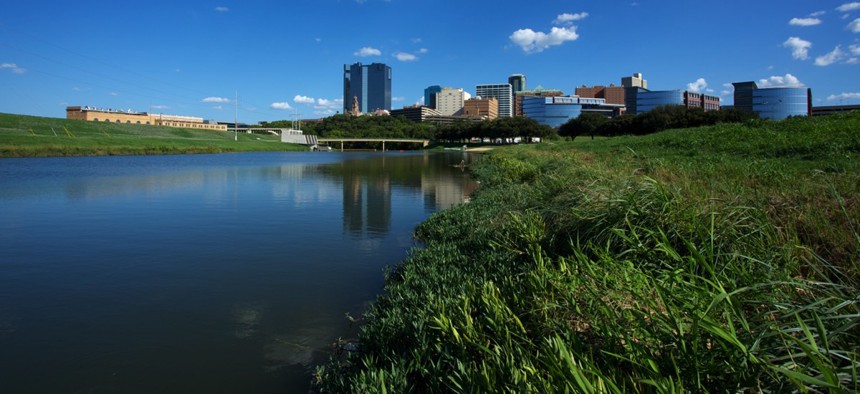Fort Worth Is Sharing Data With the Private Sector Faster

Fort Worth, Texas David Lee / Shutterstock.com
Cities have a new standard for releasing building permit data. Now what?
Civic Insight built a test website for Fort Worth, Texas, in the span of a week thanks to the fact both use the new Building and Land Specification, or BLDS, data format.
The San Francisco-based data visualization company couldn’t possibly have pulled that off four years ago, when local leaders in Cowtown sat back and watched as the first wave of U.S. cities embraced open data.
That was before Seattle-based Socrata made Fort Worth a pilot partner in creating its Open Data Network in 2014.
“We have all this data, but if you go to Google or Yelp, there may be things they have wrong about us,” Brian Chatman, web content strategist for the city, said in an interview. “Anything we can do that pushes changes to other outside groups, we want to be involved in it.”
Socrata’s ODN platform launched in July 2014 with the goal of making structured building permit data more accessible and useful to housing and real estate industry partners like Seattle-based Zillow.
Being able to find out what work has been done on a particular house—wherever potential buyers choose to access the information—provides added value to residents and visitors both. So Socrata convened a group of industry experts that ultimately developed the easily consumable BLDS.
“Governments are then able to benchmark and compare data across different jurisdictions,” said Aditya Agrawal, senior manager of Socrata’s ecosystem and strategic alliances team. “The standard is only a means to an end because the real value is in how that data is going to be used.”
Fort Worth watched some cities publish datasets in 2011 and proceed to neglect them by 2014. So the city, the fifth largest in Texas, committed itself to tying any data it released to a business process.
The city released its first dataset with Socrata on development permits in August 2014—consisting of around 1 million rows. Partnering on the ODN mostly meant providing the privately held cloud software company access to do the work.
Since BLDS was posted to GitHub in July, Fort Worth has focused on populating optional building permit data it would like to make available and aims to finish in a few weeks.
“We want to be sure we’re providing a canonical source of data that we’re committed to updating,” Chatman said. “We wanted to make it part of processes core to our open data initiative.”
A commitment to systemized data updates prevents stale data, the bane of any government looking for return on investment in the form of applications created using the ODN for the benefit of their citizens.
Socrata already has about 300 customers globally in the ODN—from federal agencies to multilateral NGOs across Europe, Africa and Australia—and aims to get millions of users at the household level making data-driven decisions, Agrawal said.
The latest version of the ODN released three months ago with several other verticals for civic services, public health, finances, restaurant inspection scores, and 311 calls. Machine learning on the backend continues to improve, so the platform has a better understanding of the data governments are releasing and how to use it—automating tagging for more intelligent searches.
State and local governments automatically have their data federated into the ODN in conformance with BLDS upon becoming customers, a big upgrade to their portals if they have them.
“I think governments work under a paradigm where they want to be able to provide better services back to their citizens,” Agrawal said. “But they’re limited by resources and trying to understand use cases and ROI of all their efforts.”
Launching the ODN was about figuring out what the data standards should be, Chatman said, so it’s still too early to tell just how beneficial it will prove.
The private sector, in many cases, is still working to automate integration of ODN data into their websites.
“We hope that by publishing standardized datasets, we’ll be able to implement them faster,” Chatman said. “And that this source doesn’t just benefit citizens living in the city but also people looking to do business.”
Dave Nyczepir is News Editor for Government Executive’s Route Fifty.
NEXT STORY: Route Fifty City-County Roadtrip Recap: Grand Rapids Learns to Live With Its River Risks






